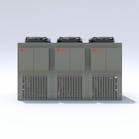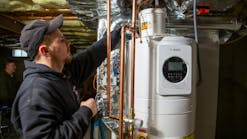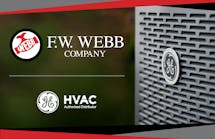At the HVAC Systems & Equipment Council meeting at last year's Annual Conference, the issue of regional standards related to HVACR equipment arose and raised some interesting comments.
Because we surmised the attendees had a strong interest on the subject, we decided to pursue the conversation. We decided to ask a panel consisting of a major wholesaler, a manufacturer and a senior fellow at a nonprofit that promotes energy efficiency.
We created three of the questions and allowed each participant to ask/answer his own fourth question.
Here's what they had to say about regional standards.
QUESTION 1
What benefits do you see associated with regional HVACR standards?
SACHS: At ACEEE (American Council for an Energy-Efficient Economy), we believe that regional standards can save energy. We predict that manufacturers, distributors, contractors and consumers will all benefit from rating methods that are more appropriate for the needs of houses in different regions. In the hot, dry Southwest, dehumidification is irrelevant — the air is very dry anyhow. But, EER — steady-state efficiency at very high temperature — is very important. That's what determines how much electricity must be generated. Sixty percent of California's peak power requirements are attributable to air conditioning. If we can avoid new power plants by making more-efficient air conditioners at much lower cost than by increasing our purchases of expensive generating equipment that won't be used but a couple of hundred hours/year, society and the environment win.
In the Southeast, a less scrupulous manufacturer might try to achieve higher ratings (SEER) by increasing the sensible heat ratio at the risk of leaving customers cold and clammy, with high bills to boot. Maximum SHR requirements will help create a level playing field. Energy efficiency must include comfort and protection against mold. So, we think that these two regions need different standards from the national norm. The report I did with colleagues from Florida Solar Energy Center and CDH Energy on this subject is available free at http://aceee.org/pubs/a071.htm.
CRAWFORD: One must distinguish between intended benefits and real-istically attainable benefits. The intended benefits are laudable: reduced energy consumption, emissions and consumers' energy bills. The attainable benefits may be much less than expected due to market resistance.
ROBERTS: I think the proponents believe that this is the solution to delivering comfort systems that deliver economical, comfortable indoor environments in those parts of the country that endure extremely high ambient temperatures or humidity.
QUESTION 2
What costs do you see associated with regional HVACR standards?
SACHS: We believe that the costs will be less than most people fear. Manufacturers are concerned about increased costs to certify equipment, so we're trying to work with them on better test methods. For example, our core proposals would not change the rating points used in the tests, to minimize additional work. Regional standards may also offer a way for distributors to differentiate themselves through better information management for inventories, order placement and order fulfillment. I think this will be an opportunity for the best OEMs and distributors to support their contractor customers with the most appropriate products for each application.
Look at it this way: We think that the costs will be much less than the alternatives of building and running more power plants. Leaving out costs of fuel, new power plants cost in the range of $4,000 per kilowatt of capacity, or $4/watt. We believe that this industry is creative enough to avoid that new demand at a much lower cost. We also want to help make this profitable.
CRAWFORD: Some insight is offered by the market response to the 13 SEER minimum efficiency requirements, which went into effect in 2006. More-efficient systems cost more to manufacture, and of course, these costs are reflected in the price of the systems. Consequently, the response has been more repair vs. replacement in the event of failure, and conversion of potential sales of high-efficiency, American-made central air conditioners to sales of lower-efficiency, foreign-made room air conditioners. Regional standards that are more stringent than the national standard are expected to trigger a similar but, perhaps, more significant market response. To the extent that there is further market conversion to repair-instead-of-replacement and to the use of more room air conditioners instead of central air conditioners, one of the costs will be the loss of American manufacturing and contractor jobs. Another cost would be the loss of some of the expected energy conservation and emissions reductions.
Regardless of the technical success of regional standards, there will be very real dollar costs for administration and enforcement. A large number of major cities (i.e., market hubs) lie on or close to state borders, particularly in the eastern half of the United States. Many of these will also be on regional borders, causing significant market burdens. Among these will be the need for distributors and contractors to carry increased stock levels to serve markets in two regions; multijurisdictional compliance-inspection, reporting and enforcement of regional minimum standards; and lost sales from compliant contractors to noncompliant contractors selling products intended for the less-stringent region into the more-stringent market.
Rule-making for administration and enforcement has been deferred until after regional standards are established. Thus, it is impossible to quantify the “costs” of enforcement at this point. Although various enforcement scenarios can be postulated, it looks as though the chief enforcement official will have to be the building inspector in each jurisdiction, and today's building permit and inspection practice varies greatly from state to state and municipality to municipality.
ROBERTS: I believe the costs of regional standards potentially begin with duplicate inventories for those manufacturers and wholesale distributors who serve customers in more than one region. Additionally, the cost of all equipment may tend to rise as the economy of scale of building one entry level product line disappears. Also, the unintended costs of accidentally shipping region “a” equipment to a region “b” customer, or the intentional costs and disruptions of those trying to circumvent the system for economic gain, are unpredictable.
QUESTION 3
Do you think regional HVACR standards are a good idea? If so, what type and why? If not, why not?
SACHS: Regional standards could save more energy than modest increases in SEER level. I have worked on this question for several years with some of the best engineers in the field. We recommend three regions for central air conditioners: hot-dry, hot-humid and national. For gas furnaces and boilers, we have proposed two regions. The colder states would be served by condensing equipment (AFUE 90 or better), and the warmest states could still allow 80 percent noncondensing furnaces. However, if natural gas prices remain as high as projected, then condensing furnaces will be cost-effective nationally.
CRAWFORD: This may be a moot question since DOE has authority under the Energy Independence and Security Act of 2007 to set regional standards, and there is strong ideologically driven pressure to do so.
As a concept, regional standards have a certain appeal. As a practical matter, regional standards will increase the cost of doing business, may lead to greater use of room air conditioners vs. more efficient central air conditioners, and can be expected to cause more repair vs. replacement decisions, thus having the opposite effect than what is intended on energy consumption and emissions reduction.
ROBERTS: First, existing legislation permits definitions of regions by state borders only. Climatological maps look nothing like state borders, so to impose a climatological solution on a political map is neither logical nor effective.
Secondly, I think the cost to all isn't worth the benefit to a few. I think that there is a much better solution to be found by working together with stakeholders to develop reliable measures of performance for different climatological conditions. I'm sure that the manufacturers could work to develop test points that, while indicating reliable, sensible and latent performance for different climates, would still permit a single federal rating and efficiency test point to preserve economies of scale for our customers.
QUESTION AND ANSWER NO. 4BY HARVEY SACHS
In the long term, how do you see the residential HVACR equipment market evolving?
I think some trends look pretty clear. First, the real estate “bubble” of McMansions is over. New construction will be dominated by smaller houses that will be built better and perform better, which means lower sensible heat and cooling loads. However, we may actually need efficient mechanical ventilation. I think that the market could grow for integrated space-conditioning and water heating solutions, such as triple-function or full-condensing heat pumps that give fast hot water recovery. Condensing gas appliances that meet hot water and space heating needs may reduce costs. But all of these units must be engineered to simplify installation, operation and diagnostics. I hope building codes will impose performance requirements that will lead to moving all equipment and ductwork inside, eliminating attic equipment and leaky, unbalanced ducts. Modulating equipment will become nearly universal for its efficiency and comfort advantages. I look forward to more “robust” equipment that “keeps on tickin'” if the installation is nearly right, and does self-diagnostics that let the contractor understand the issues remotely. This is starting to happen now. So, I'm optimistic that the future will bring us greater efficiency, greater comfort and equipment that we can actually install and use successfully, despite continuing concerns about the availability of enough skilled tradespeople.
QUESTION AND ANSWER NO. 4 BY JIM CRAWFORD
What is the major conceptual flaw of regional standards?
Regional standards are regressive. They reduce consumer choice and impose undue expense on the entire supply chain, from the manufacturer to the consumer. It seems unreasonable to require the small home owner, who may use HVAC quite frugally, to purchase the same level of efficiency as that required of the owner of a home that is five to 10 times larger.
If a realistic estimate of the enforcement costs were developed, perhaps creative approaches of applying these funds instead to incentives for voluntary efficiency upgrades might offer an attractive alternative to mandatory regional standards.
QUESTION AND ANSWER NO. 4 BY TOM ROBERTS
What is the best way to make progress on this issue?
Convene a small group of stakeholders (representatives from industry and consumer groups) and work to define a nonregulatory solution that would solve everyone's concerns in an equitable fashion.
I commend the intention of those people who want everyone to be comfortable at an affordable price, while at the same time providing meaningful information to allow those consumers to discern which comfort system might best suit their needs. Surely there is a way to achieve this goal without the imposition of the additional costs, regulatory burdens and higher costs due to additional inventory for everyone else.
Tom Peric' is the editor of HVACR Distribution Business magazine. Contact him at 856/874-0049 or [email protected].
HARVEY SACHS is a senior fellow in the Buildings Program at the American Council for an Energy-Efficient Economy, where he has worked eight years. His work includes emerging technologies, market acceleration and equipment standards. He is active in several ASHRAE committees. Contact him at 202/507-4014 or [email protected].
JIM CRAWFORD is the director of Regulatory Affairs for Trane/Ingersoll-Rand where he has worked for Trane and predecessor companies for 49 years. His work involves national, international and local codes, standards and regulations that apply to HVACR products and their applications. He is an ASHRAE Fellow and is active in the ASHRAE Conferences and Expositions Committee and several technical committees. Contact him at 903/509-7273 or [email protected].
TOM ROBERTS is the president of Kansas City, MO-based cfm Distributors Inc. He has been in the HVACR industry for 30 years and is the chair of HARDI's HVAC Systems & Equipment Council. Contact him at 816/842-5400, [email protected] or visit www.cfmdistributors.com.








